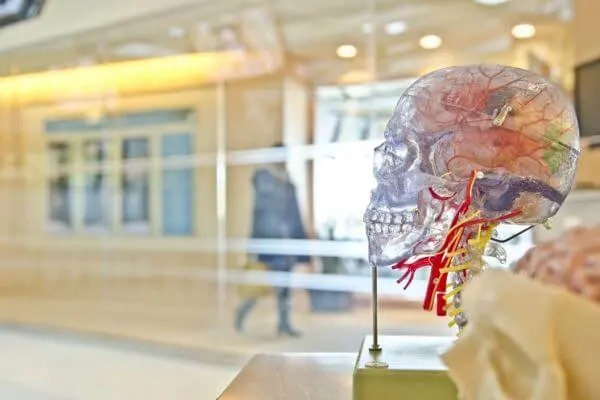The Sway
More formally known as Chronospatial Differential Syndrome II (CDS-II), it is commonly found in comorbidity with Acute Chronosognia.
Chronic
Episodes of CDS-II range from a few minutes, though aftereffects and post-episodic recovery can last hours to days, depending on the severity.
Chronospatial Differential Syndrome II (CDS-II) is a chronic, progressive, inflammation-based neurodegenerative disorder primarily affecting the parietal lobe and advancing through other areas of the brain over time. Mechanisms of fermionic cargaphagia, normally beneficial to the chronoperceptual and quantum disalignment capacities of the individual, become a double-edged sword when prompted into uncontrollable productive cycles caused by sustained exposure to the quantum radiation produced by helicoidal electromagnetic waves.
Though the development of CDS-II does not hamper the chronoperceptual abilities of the individual afflicted, and does not damage the capacity of the individual to engage in quantum disalignment, the supernusceleric build-up of f. cargaphagia generated by the combined activity lead to increasing bouts of neural inflammation that cascade into long-term damage. Subsequent viral infections become more common and more difficult for the physical systems to fight off as the neural tissue is increasingly strained and damaged.
Mild cases are marked by a sense of vertigo, lending the disease its popular name of "The Sway." As the accumulated viral load eventually leads to periods of vestibular neuronitis, difficulties with inner ear function are prevalent markers of the progressive severity of the disease. Sufferers report a sensation of "dislocation" within the quantum structures referred to colloquially as "The Weave," and without treatment, describe difficulties maintaining balance and/or a sense of self during such episodes, typically leading to a loss of consciousness. The loss of consciousness appears to restabilize the individual until the next significant outbreak (generally spurred into production by the use of the individual's abilities). Early detection allows for a treatment regime through a combination of oral antivirals and sedatives designed to inhibit chronoperceptual stimulus detection, which taken regularly have proven to slow the degenerative nature of the inflammation. Early stage treatment medication for CDS-II remains a Class 3 Controlled Substance, requiring both a provided prescription through a participating physician of the Unitary, as well as identification papers verifying the individual purchasing said materia.
Moderately-progressed cases begin to show the effects of additional cumulative damage to the dorsolateral prefrontal right cortex, causing subjects to show marked changes in chronoperceptual abilities, and in the performance of temporal discrimination. Sufferers describe an inability to feel "rooted" in time as their naturally divergent chronoperceptual tendencies are amplified by the increasing neural inflammation, and patients display difficulties engaging in identifying or prioritizing interactions in present time. Quantum disalignment capacity is not diminished at this stage; however, use is disadvised as judgment, due to temporal confusion, is impaired. Medical treatment through injection is the most effective means, though dosage management requires a professional as rates of addiction are high.
Advanced cases display severe inflammation spreading to the basal ganglia and cortex major, observable through increasing difficulty engaging motor skills in everyday interaction but especially used in combination with quantum disalignment ability. Individuals with advanced CDS display notable damage to their chronoperceptual skills, and the psychological disassociative stresses influence a wide range of behavioral degradation, cognitive capacity, and increased aggression. Though supervised care may alleviate symptoms through sedation, advanced cases of CDS-II progress to a loss of motor skills, and remaining treatment prioritizes end-of-life care.
Because of the instinctual reflexes of f. cargaphagia in responding to threat to the host's life, sedation is the primary course of end-of-life treatment, with euthanasia recommended. In such instances that medically-induced euthanasia is not possible, it is imperative to induce flaccid paralysis in the killing strike through the Fatal Immobilization Zones of the skull, in order to sever the spinal column and prevent involuntary muscle contractions triggering quantum disalignment.
As a progressive neurodegenerative disorder, no known cure exists and treatment of the disease is focused on management and long-term care.
CDS-II is relatively rare, displaying itself in the minority population of Cargandians referred to as Primed, colloquially known as "Weavers."
Because of the rarity of - and ethical issues surrounding - the few remaining unaffected Primed, it is unclear if the aberrant mutation of f. cargaphagia is transmissible by blood or neural fluid injection. Efforts to treat CDS-II with injection of healthy f. cargaphagia have not yet proven successful, though quantities and diverse colony specimens of unaffected neural fluid are limited. Non-Primed Cargandians or other colonized classes do not appear to produce the proteins necessary for the symbiotic hosting of f. cargaphagia.
Due to a lack of participating individuals, further study is needed to determine the genetic transmission of f. cargaphagia in Primed procreants.
Though isolated cases had appeared prior in medical history, the electromagnetic events of the Third Hill and the resulting metaphysical disruption of the psychophysiocolonistic machination referred to as "The Covenant" have increased numbers of the affected significantly.
This condition was created by M'na Kkaxe on Notebook.ai.
See more from M'na KkaxeCreate your own universe
